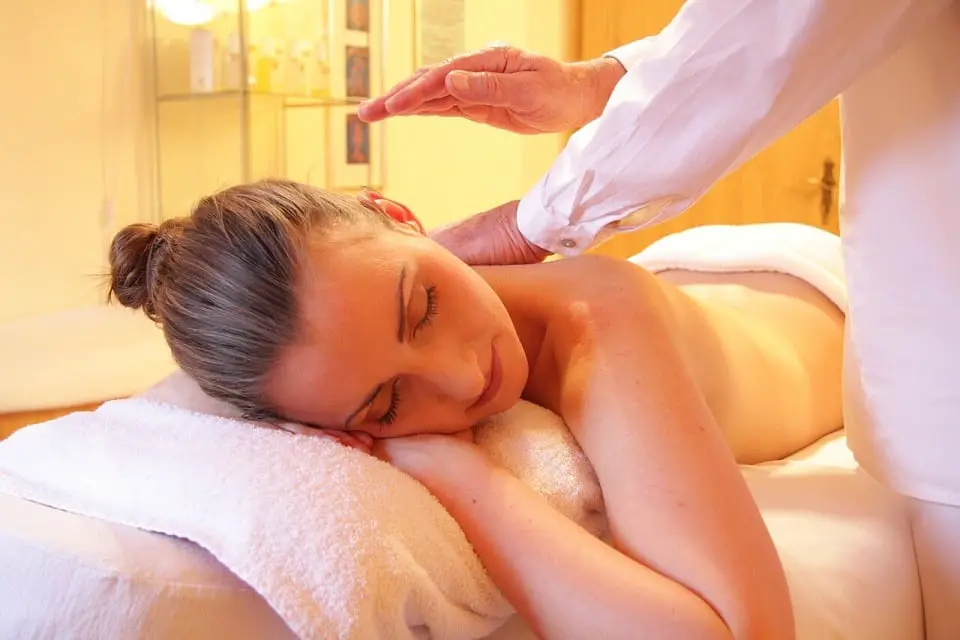Swedish massage is probably the most well known, and most popular type of massage in the Western world. But what is a Swedish massage and why do I think you should experience one?
Because it’s incredibly relaxing and has great all-around health benefits. Both mentally and physically.
If you’re looking for a massage to deal with some specific muscle pain or other chronic issues howeever, you’d be better off looking into a deep tissue massage.
It’s another form of massage, involving a lot more pressure and targets the pain points to resolve deep tissue injuries.
A Swedish massage is perfect for all kinds of general aches and pains and strains from daily life. As well as being one of the most enjoyable pampering experiences!
Massage such as deep tissue and Swedish massage should always be carried out by a licensed and trained professional.
Each massage therapist will have their own techniques and methods, but they are best placed to offer a quality massage. Even if a friend does promoise they give a good massage!
What It’s Like Receiving a Swedish Massage?
Being a Western technique, Swedish massage focused on the concepts of physiology and anatomy. In contrast, Asian massage focuses on energy work with ‘meridians’ and ‘sen lines’.
A typical Swedish massage lasts around 60 minutes. Some people opt for up to 90 minutes if they have specific pain problems they want worked on. It can take several sessions to work out some problems.
The massage therapist uses massage oil to lubricate the skin before starting work. They then perform various massage strokes to warm up the muscle tissue.
This releases the built up tension and starts to break down the knots in the muscles. You might feel a touch of discomfort if you have some knots, but it’s mild and well worth it for the results.
Before treatment starts the therapist will ask you if you have any specific injuries or other health conditions they should know about.
Things you should disclose to the therapist include muscle stiffness, allergies, other conditions such as pregnancy and chronic medical issues.
If you have had a massage before, or even if it’s your first massage you should express your preferences. Some people like firm pressure, while others prefer light pressure. It’s just a personal preference.
After the consultation, the therapist will let you know how they want you to lie on the massage table. Either face down, or face up.
There will be either a towel or sheet to lie underneath, and you should be on a lovely soft massage table blanket. The therapist will then knock before entering the room and check you’re ready.
Being Nude While Having a Massage
This is often something that gives first timers some concern. But there is nothing to be concerned about. The therapist will uncover the part of the body they are working on.
It’s worth remembering this is what they do every day and it’s completely normal to the therapist so leave any inhibitions outside the door.
Generally, you will start face down, with your face being in a built in face cradle in the bench. This helps support your spine and keep it neutral.
The therapist will then start working on your back. Starting with various massage strokes, including effleurage, friction, stretching, tapping and kneading.
After working on the back, they move on to the legs. They will work the backside then ask you to turn over. They can then work on each leg, both your arms and typically will finish on your neck and shoulders.
Like I mentioned earlier, all therapists have their own methods and techniques. This outline is just a general guide. You can ask them to focus more on certain areas if that’s what you prefer.
Likewise, you can speak out if something is uncomfortable for you. They are there make the experience as beneficial as possible for you and aren’t mind readers. So speak up if there is anything you would like done differently.
Swedish massage does involve targeting certain areas of the body and fixing muscle pain and tension. But if you’re after deep muscle targeting or more intensive work, you need to book a deep tissue massage.
Why Is It Called a Swedish Massage?
Swedish massage was developed in the Western world. While massage was already very popular in the East, techniques and methods were being developed in the West.
Swedish massage was developed by Per Henrik Ling between 1776-1839. He was a Swedish physiologist at the University of Stockholm.

I’m a MA, (CMT) Certified Massage Therapist, Licensed Massage Therapist (LMT), and Reiki Master — I’m a licensed massage therapist with over 10 years of experience in the industry.

